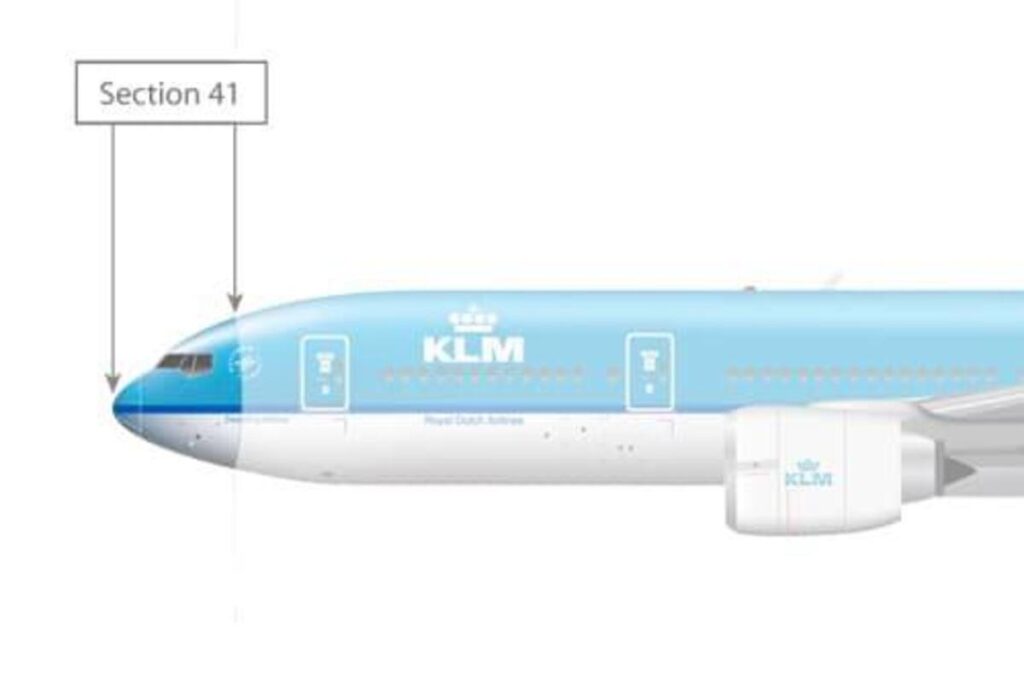
It’s been a unique Boeing tradition since the late 1950s.
Boeing’s first passenger jet, the 707, had its nose section designated as section 41 in engineering drawings. There is no planned section in front of the nose section. It is one end of the airplane.
It is the portion of an aircraft, extending from the nose to just aft of the cockpit windows. It is common practice for airline manufactures to utilize the same cockpit and nose designs, as next to the wings, it is the most complex part to make on an airplane.
Thereafter, every Boeing jet has had section 41 as the nose section.
Boeing 707s, 727s and all 737s, have the same section 41.
The Boeing 767 and 777 has the same section 41, however have vastly different avionics.
The 757 has a different nose. One guess is that the position of the flight deck and avionics and such is supposed to mimic the 767 to share a type rating, and that likely dictated a different shape for the nose.
The words “Section 41” became notorious midway through the production run of the Boeing 747, when cracks began to be found in the structure. A very costly inspection and modification program had to be undertaken by affected operators at the time.

▲ Section 41 cracks
Author – Krishna Kumar Subramanian (Aircraft Engineer, Aircraft Systems Educator)






